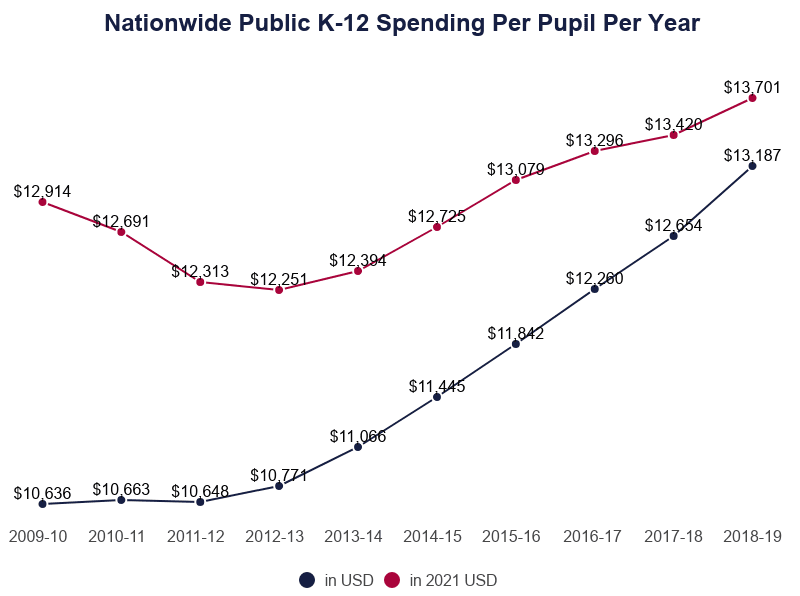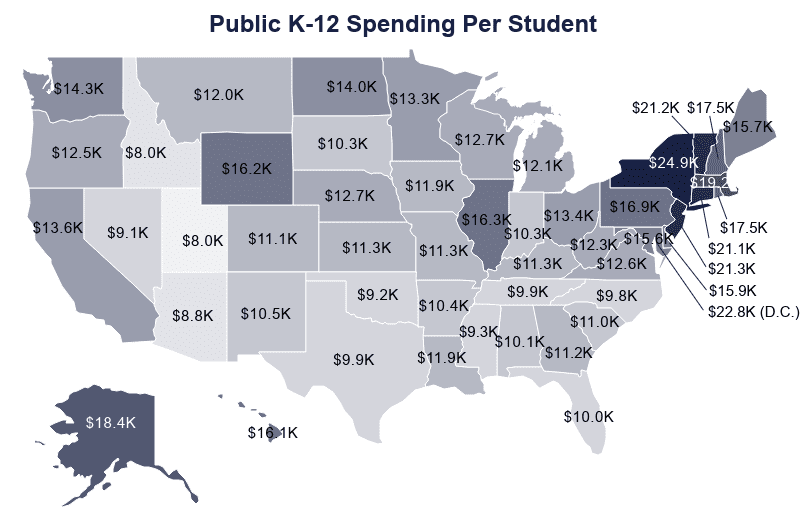Hi, welcome to my blog. In this blog, I will be discussing the good and bad of education in the United States from flaws, finances, fairness, and more. As many are aware, the education system in the United States is nowhere near perfect. Although it has come a long way, and it is ranked the number one educational system in the world by World Population Review, they also state that “U.S students consistently score lower in math and science than students from many other countries.” If the US is the number one educational system in the world, why might this be occurring?
Not only does the US public education system flaw in testing scores, but financial aspects. Education Data Initiative states that “Federal, state, and local governments provide $764.7 billion or $15,120 per pupil to fund K-12 public education.” If we are spending this much money on public education, why is there still flaws? So. Many. Flaws. As I dive deeper into my blog throughout the semester, the financial flaws of the United States public education system will be discussed much further, from teachers’ pay to quality of public schools’ buildings.

As stated above, the United States government provides almost $765 billion per year to public education. With this, so much of this money is coming from taxes paid by citizens. Even citizens who may attend private schools pay taxes to fund public schools, and they are not an option (rightly so, they are provided to people for a reason.) Taxes are paid by everyone, from a sixteen year old at their first job to a sixty five year old getting ready to retire. As someone who attended a public school their whole life up until going to a private high school, I’ve seen differences in private schools funding and public schools funding. For example, private schools struggle because they are not/are minimally funded by the government, therefore relying on donations from students, parents, alumni, and families, whereas public schools struggle because they are not getting enough money from the government, and also get minimal donations.

From test scores, to teachers, to students, to taxes, governmental costs, school buildings, and more, there is so much to be discussed about the public education system in the United States. As the semester goes on, I cannot wait to learn and share more about these topics which if not already impacting us all, will most likely do so someday.
I am also a student that went to public school up until attending private school for high school, so I also understand the differences between private school funding and public school funding.
I believe that education is one of the biggest issues America is facing right now, from gun violence in the classrooms to continuous lack of funding. I am excited to read more from your blog and find your point of view very interesting.
I am very interested in hearing more about your topic! I have a lot of family members that work in schools, and I went to public school my entire life (and enjoyed it). The information on spending is really interesting because I have heard a lot of people joke, saying, “That’s where my tax dollars are going?!”. School spending is something that everyone is affected by because you are either the one paying for it or the one using it.
This is a cool topic! There is a lot you can talk about with public schools in America. Your data was pretty shocking. I knew public schools were flawed, but these details really amplified that idea. I went to public school my whole life. My high school was public, but it was one of the best public high schools in PA, so I got very lucky. Our school had a bunch of funding compared to other public schools in the area (the suburbs outside of Philly), or even in Philly. I am excited to hear more about the flaws of the public school system!
I love the topic that you chose for your civic blog! I think that the education system in the US is definitely something that needs to be broken down, especially when you compare and contrast it to other more and less successful countries (in terms of education). I’ve also attended both private and public school in the past, and have definitely noticed the differences between the two. Although the public schools have more funding, they have more students and less personalized programs, so the resources seem to be spread thin. Although private schools have fewer students, and therefore more personalized programs and can foster better student/teacher relationships, they lack the funding needed to improve the school and its resources. It is so wild to see the difference between well-established/funded private schools, and the less funded ones (just as striking as the difference between the lower/middle class and the wealthy!). I’m excited to learn more about the educational system in the US, and what could possibly be changed to make it better!